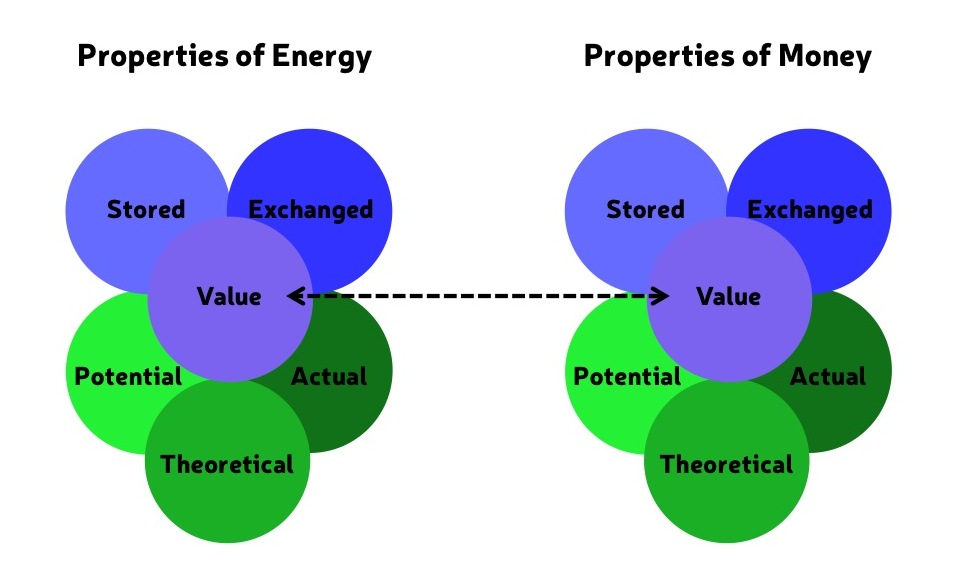MONEY IS A FORM OF ENERGY
In the previous unit, I explained that in order to visualize your production process as an energy and information system, you need to consider the system in business relevant terms. Accordingly, energy = money, information = friction, and rules = performance.
In this unit, we’ll focus on one aspect of the system: Energy/Money. Money shows you how the system works, how much money is being processed, where the work is happening, and when the work is happening.
First, I should explain why I liken the role of money in the production process to energy. It’s actually pretty simple. Money in this context behaves like a form of energy. Think about it this way:
Energy is measurable. It has numerical value (kWh or kilowatt-hour, for example). Money is also measurable. It has numerical value too (dollars, for example). We trade the value of energy and money back and forth all the time. My utility charges me around $.10 for 1 kWh. I’m trading my money for energy; the electric company is trading energy for money.
Energy and money share other properties as well.
In an energy and information system, energy is the thing that is in motion or has the potential to be in motion. In the production process, money is in motion.
Just like energy, money can be collected, stored, and transferred into other things – like products and services. These products and services can be transferred back into money.
Like energy, money is not created or destroyed. It’s just changed from one form to another. This happens every time you buy or sell something. When you buy something, you are transferring money from your personal business engine into another person’s business engine in exchange for a product or a service.
Finally, just as there are three ways of describing energy: Actual, Potential and Theoretical, there are three ways of describing money: Actual, Potential, and Theoretical.
Actual Money is the real money that you receive and spend. The actual money can be found on your profit and loss statement (P&Ls).
Potential Money is the money visible in the sales funnel, which is comprised of Traffic, Calls, Leads, Jobs, and Customers. Potential money is converted to actual money when someone pays for a product or service.
Theoretical Money is the money that you “predict” you will get by creating a budget that calculates actual and potential money.
In this way, I believe that Newton’s Laws apply to business systems.
Let’s see what it looks like.
- The way money works in your business is the same way energy works in an energy and information system.
- Both money and energy are measurable, can be stored and exchanged, exist in theoretical, actual, and potential forms.
In the next section you will learn the basics of my approach to visualizing money in a business.

